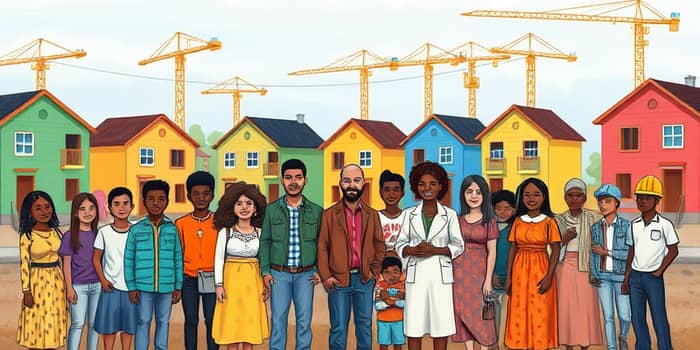
As 2025 unfolds, the struggle to find affordable shelter has escalated into a defining political issue across the United States. Citizens, candidates, and policymakers alike are grappling with how to address a crisis that touches every community, from rural towns to the heart of major metropolitan areas.
The data paints a stark picture: there is a severe shortage of affordable homes nationwide, and the gap between supply and demand has never been wider. For extremely low-income renters, the shortfall stands at an astounding 7.1 million homes, meaning only 35 affordable units exist for every 100 households in this category.
Meanwhile, homeownership remains out of reach for most. Over 57% of U.S. households cannot afford a $300,000 home, and 75% cannot purchase a median-priced new home at $459,826. Renters are not spared: more than three-quarters of those at the lowest income levels are severely cost-burdened households, spending over half their earnings on rent.
At the heart of the crisis lies a supply-demand imbalance across regions. The documented shortage of over 4.5 million homes has been exacerbated by years of underbuilding, leaving tens of millions without options.
Complicating matters further, there has been rapid home price growth that far outpaces wage gains. Between inflation in construction materials and labor costs, the price of new builds has surged. Meanwhile, persistently high mortgage rates near 6.5% have deterred would-be sellers from listing, creating a lock-in effect that chokes the secondary market.
Local regulations also play a significant role. Zoning restrictions and regulatory barriers limit the density of new housing developments, especially in high-demand neighborhoods. Without reform, even the most ambitious construction plans struggle to gain approval.
As homes become less affordable, the traditional path to wealth and stability through ownership is slipping away, particularly for younger generations. Homeownership rates among those under 35 are falling, reversing decades of expanding access and widening a generational divide.
The crisis also deepens inequality. Many minority and low-income families—groups historically reliant on housing as a wealth-building tool—are now locked out of that opportunity. Regions that fail to expand affordable options see constrained economic growth, lost jobs, and declining mobility.
In response, policymakers at every level are debating how to reinvigorate supply and provide immediate relief. Proposals range from expanding down-payment assistance to radical zoning overhauls.
Yet each proposal faces hurdles. Funding constraints, partisan gridlock, and local opposition often stall ambitious initiatives before groundbreaking ceremonies ever occur.
The U.S. is not alone. Cities like Sydney and Melbourne have seen house prices rise 50–70% since 2012, making family wealth a primary factor in homeownership. Australians now rank housing affordability among their top political concerns, mirroring the urgency seen stateside.
By mid-2025, every major election cycle features housing affordability as a central campaign theme. Voters are demanding action on rising rent, stagnant incomes, and the ability to buy a first home. Advocates argue that solutions must be bipartisan, citing the broad impact across urban and rural districts, red and blue states alike.
The stakes are high: cuts to federal housing aid could disproportionately harm vulnerable populations, while inaction risks further economic stagnation. As local leaders vie for innovative models, from public–private partnerships to community land trusts, the nationwide debate grows more intense.
Housing affordability in 2025 is more than a policy discussion; it is a social imperative. The crisis affects not only where people sleep, but how they work, learn, and plan for the future. Addressing this challenge will require concerted, nonpartisan leadership and a willingness to tackle complex regulatory, financial, and social barriers.
The road ahead involves difficult trade-offs and bold visions, but the potential reward—a nation where families can afford a home without sacrificing basic needs—is worth the effort. In the coming months and years, the decisions made by elected officials and community advocates will shape the American Dream for generations to come.
References













